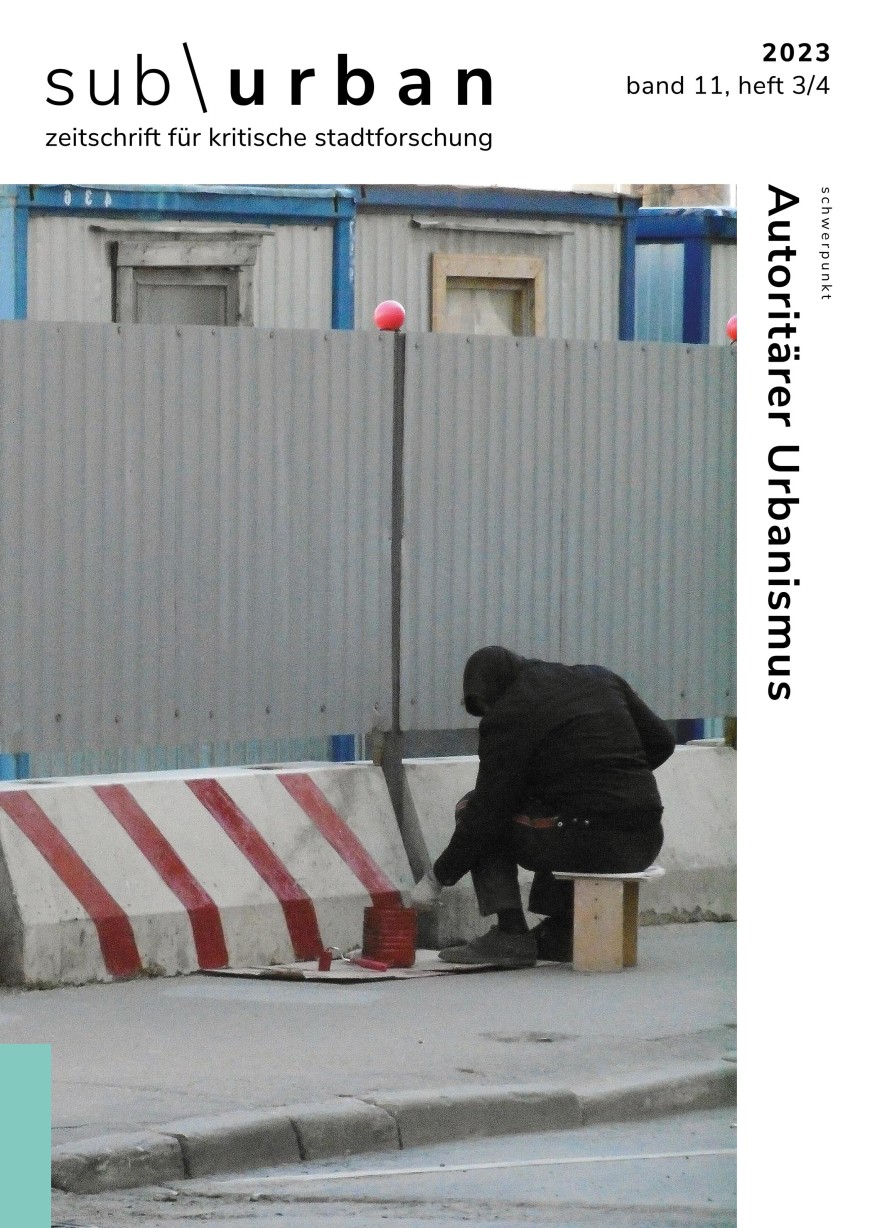Megaprojekt “Belgrade Waterfront” Neugestaltung der Stadt durch autoritäre Stadtentwicklung
An article by Nebojša Čamprag published in a special issue of sub\urban journal for critical urban research.
2024/01/13
The paper analyzes an urban megaproject in Belgrade as an example of a state-controlled regulatory intervention with a special legal status, which places the interests of private investors above the principles of representative democracy.

Authoritarian urbanism operates with loud as well as quiet forms; it comes along sometimes openly, sometimes stealthily, sometimes even camouflaged; it is sometimes recognized as such, misunderstood or remains unrecognized. Authoritarian urbanism is contradictory and changing in character. Not only does it frequently change its face and the way it works and functions, but it also usually moves in the area of tension between authoritarian and democratic, between liberal and illiberal practices; it never appears in its pure form, but is always complex and contradictory. Actors who act in authoritarian contexts and try to resist are confronted with precisely those areas of tension within which they not only act, but also feel and navigate through contradictions. Our focus in this issue takes these areas of tension into account. We ask: (From) when do urban dynamics and processes become authoritarian? How does authoritarianism manifest and materialize in and through cities? And what does resistance mean in the context of authoritarian urbanism?
Kristine Beurskens and Gala Nettelbladt take a look at these areas of tension together with Daniela Zupan, the guest editor of the main topic in this issue.
“Belgrade Waterfront” mega-project – Reimaging the city through authoritarian planning by Nebojša Čamprag highlights authoritarian urban development in a specific transitioning context. It focuses on the implementation of the urban megaproject “Belgrade Waterfront”. The large-scale brownfield redevelopment project in the Serbian capital is a joint venture between the Republic of Serbia and Abu Dhabi-based investor Eagle Hills. The paper analyzes this urban megaproject as an example of a state-controlled regulatory intervention with a special legal status, which places the interests of private investors above the principles of representative democracy. In doing so, the project relies on the production of supposedly spectacular urban landscapes to secure planning approvals and public acceptance, to spatialize urban relations at the national and international levels, and to naturalize new political-economic regimes.
Full issue is available here, and the paper can be read here.




